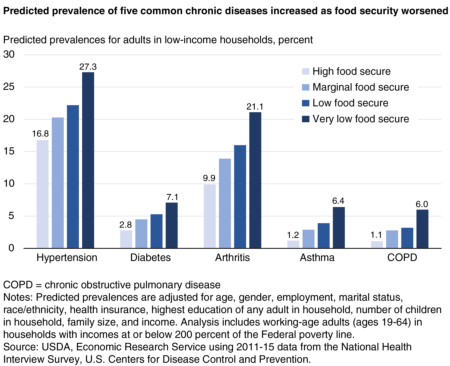Food Security
Food security for a household means access by all members at all times to enough food for an active, healthy life. In 2016, 12.3% of Americans households lacked food security, based on a national survey. Some progress has been made in improving food security since the recession of 2008-2011 when 14.9% of US households were food insecure. Improving food security is an important goal, not only for humanitarian reasons, but also to promote the nation's health. In the US, adults in food insecure households are much more likely than food secure adults to have hypertension, diabetes, heart disease, and other chronic health problems. Solutions to improve food security need to connect vulnerable households to sufficient amounts of healthy foods and nutrition education. It is also critical to address the underlying causes of food insecurity including unemployment, unstable housing, low education, and poor health.

Recipes
Click below for easy recipes that use items from food pantries
Resources
Access to Healthy Foods
CalFresh Known nation-wide as the Supplemental Nutrition Assistance Program (SNAP), CalFresh, the California program, provides monthly electronic benefits that can be used to buy most foods at many markets and food stores.
Fresh Produce Distributions Free produce and other perishable foods to Yolo County residents, provided by the Yolo Food Bank. Sites are in Woodland, West Sacramento, and Davis.
Fruit & Veggie Up! Free produce available to UC Davis students
Short-Term Emergency Aid Committee (STEAC) Food assistance for Davis residents who meet income eligibility requirements
Women, Infant, and Children (WIC) Food assistance for low-income pregnant, nursing or postpartum mothers, infants, and children up to 60 months of age
Nutrition Information
Nutrients of US Public Health Concern: Dietary Sources of Potassium, Calcium, Vitamin D, and Fiber
